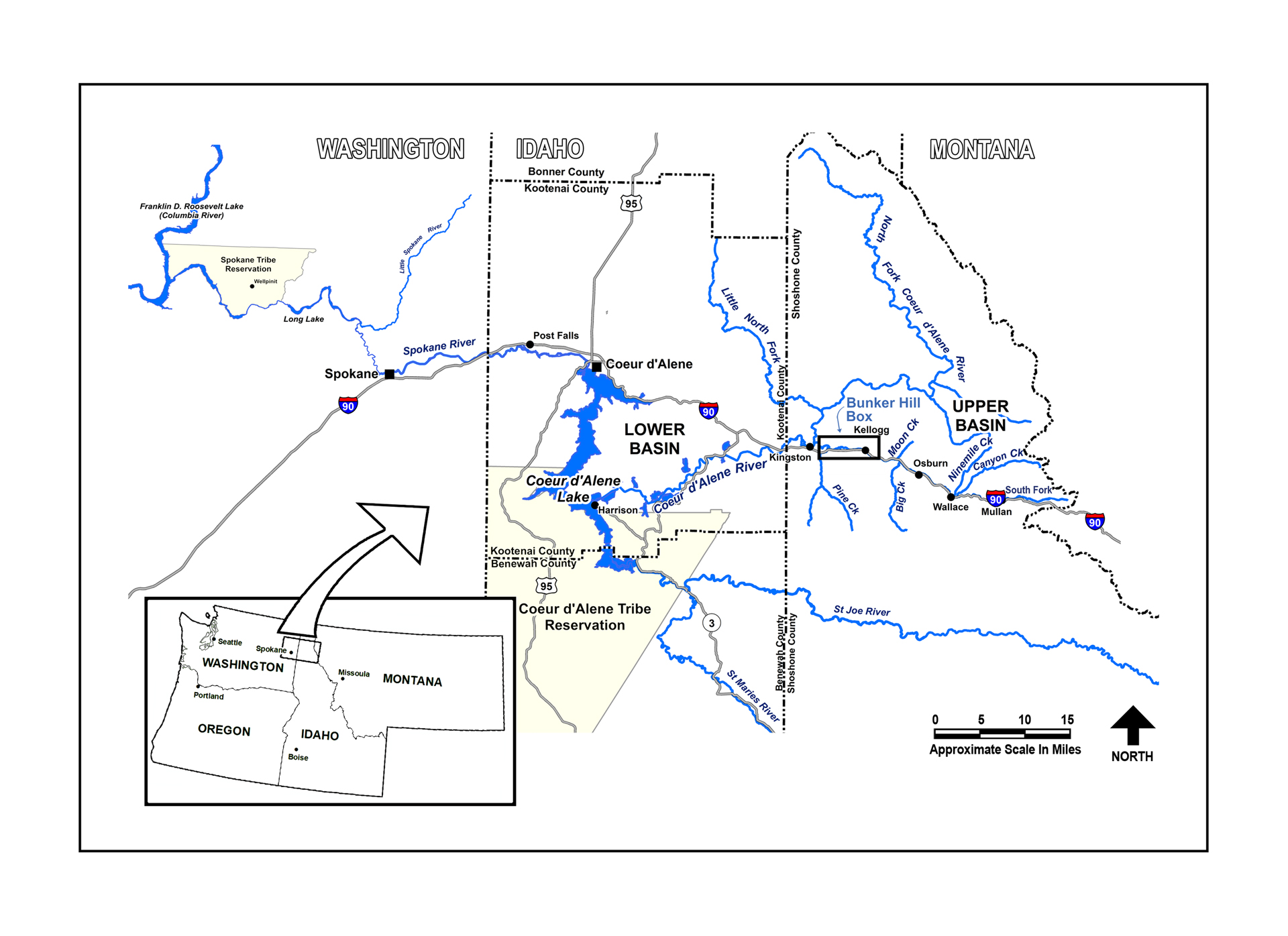The Bunker Hill Superfund Site

The U.S. Environmental Protection Agency (EPA) has divided the Bunker Hill Superfund Site into three Operable Units (OUs): OU 1 includes the populated areas of the Bunker Hill Box; OU 2 comprises the non-populated areas of the Bunker Hill Box; OU 3 includes all areas of the Coeur d’Alene Basin outside the Bunker Hill Box where mining-related contamination is located. OU 3 extends from the Idaho-Montana border into the State of Washington and contains floodplains, populated areas, lakes, rivers, and tributaries. OU 3 includes areas surrounding and including the South Fork of the Coeur d’Alene River (SFCDR) and its tributaries, and areas surrounding and including the main stem of the Coeur d’Alene River down to the depositional areas of the Spokane River, which flows from Coeur d’Alene Lake into Washington State.
In 1983, the US Environmental Protection Agency (EPA) listed the Bunker Hill Mining and Metallurgical Complex in northern Idaho as a Superfund site. This was because of high levels of heavy metals that had been released into the environment by historical mining and smelting operations. This map generally depicts the area that the EPA studied when evaluating possible cleanup actions in the Coeur d’Alene Basin in the late 1990’s. Environmental cleanup and restoration work is taking place in areas contaminated by historical mining waste in the Coeur d’Alene River Watershed, Coeur d’Alene Lake, and the upper reaches of the Spokane River.
• EPA and the State of Idaho first focused cleanup actions in the Bunker Hill “Box,” a 21 square- mile area surrounding the historic smelter complex.
• In 2002, EPA issued a Record of Decision (ROD) addressing areas beyond the Box, throughout the Coeur d’Alene River Basin, due to contamination affecting human health and the environment. The ROD requires cleanup of all contaminated developed residential, public and commercial properties above contamination action levels. Thousands of properties have already been cleaned up as have several recreation sites and mine and mill sites. Cleanup will take many more years.
• In 2012, the Upper Basin ROD Amendment was issued by EPA to establish a comprehensive, holistic cleanup approach across the Upper Basin to protect people’s health and improve water quality and the ecological system.